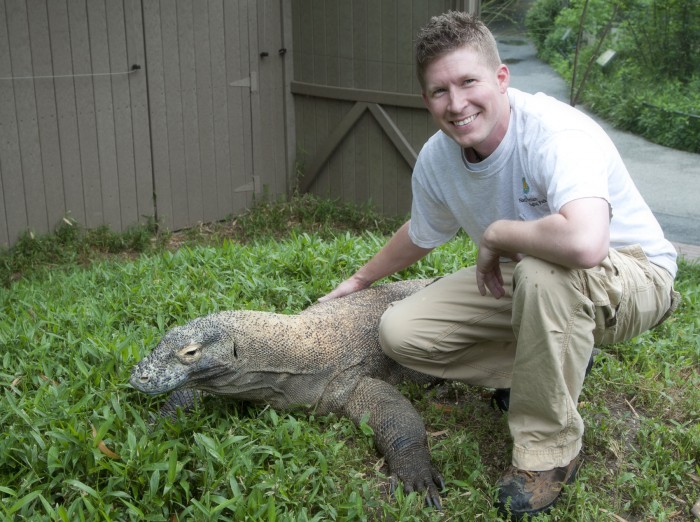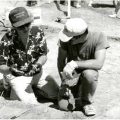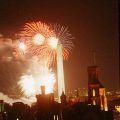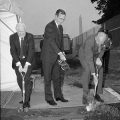Today in Smithsonian History: September 13, 1992

One of the two Komodo Dragons in the National Zoological Park’s Reptile House, ca. 1988. “Friendly” is six-and-a half feet long and weighs 30.8 lbs. at the time of this photograph. Both dragons were a gift from the Government of Indonesia to the people of the United States. (Photo by Jessie Cohen, as featured in the Torch, September 1988)
September 13, 1992 The first Komodo dragon ever born outside its native Indonesia is hatched at George Mason University on September 13, 1992. The egg was laid 237 days earlier at the National Zoological Park. Within four weeks, a total of 13 Komodo dragons hatched at George Mason and at the Zoo, comprising the largest hatching of Komodo dragons on record, in zoos or in the wild.
Indigenous to a few volcanic Indonesian islands, the Komodo dragon is the largest living lizard. The largest verified specimen reached a length of 10.3 feet and weighed 366 pounds (although this may have included a substantial amount of undigested food.) More typical weights for the largest wild dragons are about 154 pounds. Although the Komodo can run briefly at speeds up to 13 mph, its hunting strategy is based on stealth and power. They can spend hours in one spot, waiting for a deer, boar, goat, or anything sizable and nutritious.

Biologist Matthew Evans with a Komodo dragon at the Zoo’s Retile Discovery Center in 2011. (Photo via the Washington Post)
Courtesy of Smithsonian Institution Archives
Posted: 13 September 2019
- Categories:







